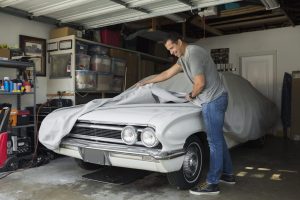Ask yourself this: If you were stuck with a flat tire, a dead battery, an empty gas tank, a blown gasket or any number of other car troubles, would you be prepared? Most drivers try not to think about the possibility of being in any of those situations, but the fact is it happens more often than what we would think. Throw in the factor of bad weather, especially come the winter months and that probability of getting stranded increases.
When these events occur having an emergency kit can make a
large difference in your experience. Having some of these items can help you
get yourself back on the road sooner than later or at least can help keep you
safe until someone can come to the rescue.
There is no limit to what you can have in your emergency kit
but there are some things that are essential to have. Below is a list of those
essential items to keep in your vehicle:
- Lighting – Flares, Flashlight, Reflective Lighting
No. 1 on your emergency kit
checklist should be lighting. Reflective lighting triangle and flares will help
notify other drivers of the roadside hazard. We suggest getting Led battery-operated
flares, they are longer lasting and reusable. A flashlight is also very
important to have on hand to help you investigate the issue with your car. It
is important to keep extra batteries as well.
- Jumper Cables/ Jump Starter
Car batteries often die or lose
juice at the least opportune moments, having jumper cables can be the
difference between waiting for 10 minutes to find another driver to jump your
car or hours for a tow truck to get out to you. Another option is having a jump
starter. This device acts like the battery of another vehicle with jumper
cables directly attached. The instructions are the same procedure as jumping
your battery with another person’s vehicle. Often these devices have
multipurpose uses, some come with an air compressor and a flashlight attached.
The only thing that you must make sure to do if you decide to get a jump
starter is to make sure to charge it. Without a charge it will be useless, so
it is always good to have a separate set of regular jumper cables.
The first aid kit is a must have
item for your emergency kit. You can find prepack kits that will have all the
essentials for small to more serious injuries. It is easy to injury yourself
while trying to get your car back up and going. Be prepared for the worst and
always hope for the best.
These items are more essential in inclement
weather conditions. If your car loses power completely and leaves you stranded
on a winters day or evening the temperature in your car will decrease at a very
fast pace. Make sure that you keep these items easily accessible to avoid
leaving your car door open for longer than necessary, letting in the cold air
Most of our vehicles have a spare
tire or at least should. You should always double check to make sure you have a
spare and to make sure that spare is properly inflated. A flat tire and a flat
spare tire a recipe for disaster or having a properly inflated spare tire but
no tools to switch out the tires. Ensure that you have the proper tools to use
your spare tire when the time comes.


